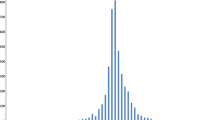Abstract
Rather than the endogenous, tournament-type regulation based on mean costs proposed by Shleifer almost twenty years ago, regulators have opted for market designs based on exogenously determined efficiency comparisons reflected in fixed productivity adjustments. These productivity assessments are based only on estimates of technical efficiency improvements derived from estimated production frontiers. Utilities’ prices and potential profits are driven by this externally determined market. This paper examines the impacts on utility efficiency rankings from variations in peer group frontier regulation in Europe and Australia as well as in its use in the U.S. Despite the potential for distortions caused by long periods with non-market prices, these regulatory applications measure only technical efficiency, leaving moot the assessment of optimal input selection. We examine both technical and allocative efficiency variations among firms from the different cost specifications employed by regulators involving output, factor inputs, and costs. How are rankings impacted when only subsets of total costs (e.g., O&M, not capital or system losses) are used to gauge efficiency? Does the use of partial measures of capital relying on physical specifications impact efficiency rankings? Are rankings affected when comparisons are made independently one input at a time? Is the efficiency frontier stable? Finally, we compare alternative yardstick measures to a simple ranking on relative (total) cost per unit.
Similar content being viewed by others
References
Bagdadioglu N., Waddams-Price C., Weyman-Jones T. (1996). Efficiency and ownership in electricity distribution: A non-parametric model of the Turkish experience. Energy Economics 18, 1–23
Berndt, E., Epstein, R., & Doane, M. (1995). System average rates of U.S. investor-owned electric utilities: A statistical benchmark study. MIT-CEEPR 95-005WP.
California Public Utility Commission. (2000). Application of PG&E for authority among other things to increase rates and charges for electric and gas services effective January 1, 1999, Decision 00-02-046, February 17.
Charnes A., Cooper W.W., Rhodes E. (1978). Measuring the efficiency of decision making units. European Journal of Operations Research 2, 429–444
Charnes A., Cooper W.W., Lewin A.Y., Seiford L.M. (1994). Data envelopment analysis: Theory, methodology, and application. Boston, Kluwer Academic Publishers
Coelli (2000). Some scattered thoughts on performance measures for regulation of a natural monopoly network industry. Centre for Efficiency and Productivity Analysis, School of Economic Studies, University of New England.
Cronin, F. J., King, M., & Colleran, E. (1999). Productivity and price performance for electric distributors in Ontario. Ontario Energy Board Staff report.
Cronin, F. J., & Motluk, S. (2002). The effects of regulatory change and third party financing on utility costs and factor choices. (Submitted for Publication).
DTe. (February 2000). Choice of model and availability of data for the efficiency analysis of Dutch network and supply businesses in the electricity sector. Accompanying “Guidelines for Price Cap Regulation in the Dutch Electricity Sector”, prepared for DTe by Frontier Economics.
Fare R., Grosskopf S., Logan J. (1985). The relative performance of publicly-owned and privately-owned electric utilities. Journal of Public Economics 26, 89–106
Fare, R., Grosskopf, S., & Lovell, K. (1994). Production frontiers. Cambridge University Press.
Farrell, M. J. (1957). The Measurement of productive efficiency. Journal of the Royal Statistical Society, Series A, Part III, CXX, 253–290.
Førsund F.R., Kittelsen S. (1998). Productivity development of Norwegian electricity distribution utilities. Resource and Energy Economics 20, 207–224
Grasto, K. (1997). Incentive-based regulation of electricity monopolies in Norway. NVE working paper.
Heuttner D.A., Landon J.A. (1978). Scale economies and diseconomies. Southern Economic Journal 45, 883–912
IPART. (February 1999). Technical annex—efficiency and benchmarking study of the NSW distribution businesses, prepared for IPART bbupay London Economics.
Jamasb T., Pollitt M. (2001) Benchmarking and regulation: International electricity experience. Utility Policy 9(3): 107–130
Korhonen, P., Syrjanen, M., & Totterstrom, M., (November 2000). Assessment of cost efficiency in the Finnish electricity distribution using DEA, prepared for the Energy Market Authority and Ministry of Trade and Industry.
Kumbhakar S.C., Hjalmarsson L. (1998). Relative performance of public and private ownership under yardstick regulation: Swedish electricity retail distribution 1970-1990. European Economic Review 42(1):97–122
Maine Public Utilities Commission. (2002). Bangor hydro electric Company Request for Approval of Alternative Rate Plan, Docket 2001-410, June 11.
OFGEM. (December 1999). Reviews of Public Electricity Suppliers 1998 to 2000: Distribution price control review. Final Proposals.
Shleifer A. (1985). A theory of yardstick regulation. The Rand Journal of Economics 16(3): 319–327
Weyman-Jones T.G. (1991). Productive efficiency in a regulated industry: The area electricity boards of England and Wales. Energy Economics 13(2): 116–122
Weyman-Jones, T. G. (1992). Problems of yardstick regulation in electricity distribution. In Bishop, M. et al. (Eds.), Privatisation and regulation II. Oxford University Press.
Author information
Authors and Affiliations
Corresponding author
Additional information
The authors were, respectively, consultant to the Ontario Energy Board and Ontario Energy Board Staff dealing with distribution restructuring when the data used in this paper were collected. The views expressed are those of the authors.
Rights and permissions
About this article
Cite this article
Cronin, F.J., Motluk, S.A. Flawed Competition Policies: Designing ‘Markets’ with Biased Costs and Efficiency Benchmarks. Rev Ind Organ 31, 43–67 (2007). https://doi.org/10.1007/s11151-007-9142-z
Published:
Issue Date:
DOI: https://doi.org/10.1007/s11151-007-9142-z




